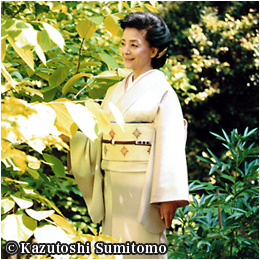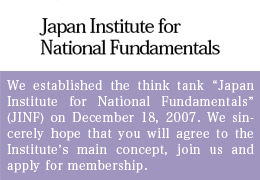MEANING OF LDP’S TRIUMPH OVER CDP-COMMUNIST ALLIANCE
I had the great pleasure of hosting new Prime Minister Fumio Kishida on my weekly “Genron” Internet TV news show to discuss a wide range of issues facing Japan last Friday, two days preceding the Lower House election. As it turned out, his ruling Liberal-Democratic Party (LDP) managed to maintain a comfortable majority, garnering 261 of the 465 seats—a performance far better than expected.
Kishida, who replaced Yoshihide Suga on October 4, talked earnestly about his three major policy priorities—the coronavirus pandemic, the economy, and national security, the latter being his overriding priority. The conservative minority Japan Restoration Party almost quadrupled its seats from 11 to 41 and the LDP’s junior coalition partner Komeito Party secured 32 seats. The three parties have thus gained enough votes combined to propose the much-awaited revision of Japan’s “peace” constitution.
About ten days before the election, Chinese and Russian navies conducted joint maneuvers in the waters off Japan, circling virtually the entire archipelago. Experts have paid special attention to the new Type 055 (Renhai-class) stealth guided-missile destroyer Nanchang that China included in the maneuvers. The destroyer carries the Chinese version of the Tomahawk land-attack cruise missile with a range of 2,000 kilometers (1,250 miles). China’s national defense spokesman Tan Kefei asserted that the joint maneuvers “were more pragmatic than before and significantly increased the fleet’s competitiveness,” emphasizing that the inclusion of the state-of-the-art destroyer markedly intensified the fleet’s menacing power.
In addition to the Tomahawk-type cruise missiles with ranges far exceeding those of conventional US cruise missiles, the Nanchang is equipped with a more powerful VLS (Vertical Launching System) that supports four different types of missiles—long-range air defense missiles, anti-ship missiles, land attack missiles, and missiles with anti-submarine torpedoes. There is a total of 112 vertically-installed cells, against 96 aboard a US or Japanese Aegis ship, from which missiles can be launched in rapid succession at the time of attack.
China allegedly has constructed a total of eight Type 055 destroyers. Xi Jinping is said to have taken the trouble of attending the commissioning ceremony of the first of the destroyers in order to boost morale in the field in July 2017.
I asked Kishida how he views the increasing threat of China. How does he intend to cope with a China that now can send a hypersonic missile orbiting the earth the long way around to attack the target unexpectedly from behind? Kishida had this to say:
“Our present National Security Policy was formulated at the end of 2013 when I was serving as foreign minister. The circumstances involving China have undergone a sea change in the past eight years. Chinese technology for hypersonic missiles, irregular missile trajectories, and sea-skimming missiles, among others, has been making giant strides forward. Space and cyber, which once belonged to the realm of science fiction, have become crucial issues for international security today. The East China Sea and the defense of our islands there…There are many things to which we must give careful consideration.”
“What does that mean in concrete terms?” I asked.
“There are a host of issues we must take a fresh look at, starting with how we should position China,” explained Kishida. “For instance, can we afford to not review our current National Security Strategy, National Defense Program Guidelines, and Midterm Defense Program. I have already instructed members of the National Security Council (NSC) to immediately start discussions bearing this review and revision in mind.”
Kishida’s instructions make sense, as he is grappling with crucial issues affecting our future as a nation. Most of we Japanese have lived the postwar era without giving much thought to military-related matters, believing nonchalantly that America will come to Japan’s aid in an emergency. But we must brace ourselves for China endlessly intensifying its military buildup and increasing its threat. In order to prevent China from getting out of line, Japan must keep a firm hold on itself while striving to bolster its national resilience.
China’s Massive Military Build-Up
But we will not be able to make proper judgment unless all of we Japanese, the general public and politicians alike, come to grips with a real understanding of what military matters are about. In this connection, we must strictly bear in mind some pertinent facts I will mention below.
We must clearly be aware that it is our government and Japan Self-Defense Forces (JSDF) alone that will protect our national security. The US-Japan Security Treaty is not a treaty under which Japan can expect to rely one-sidedly on the US for protection. Every single Japanese must share the notion that we have only Japan to defend itself. This is such a matter of course that one hesitates to even mention it, but unfortunately this notion is not shared widely enough among the general public—a major reason why we have yet to be able to revise our constitution.
Our National Security Strategy, whose revision Kishida has instructed his national security advisors to implement, reflects the direction and framework of Japan’s overall national security—the very basis of our defense strategy. The National Defense Program Guidelines meanwhile constitute the general policy for implementing that strategy, and the Midterm Defense Program implies specific measures aimed at implementing the guidelines, including the funding and manufacture of necessary weaponry.
These plans are formulated every five to ten years. At this point, the government has two more years before revising the current plans. Waiting two more years would be fine in a time of peace, but this is far from a peaceful time. China has no intention whatsoever of putting the brakes on its unprecedented military build-up, intimidating Taiwan by incessantly flying dozens of bombers into its air defense identification zone (ADIZ). China also poses an increasing threat to Japan itself, routinely intruding into our territorial waters around the Senkaku Islands and—as I noted earlier—sending a flotilla of warships around Japan to flex its military muscles.
To deter China in this kind of situation, Japan must take clear and speedy action to bolster the JSDF and the Coast Guard. We must freshly define China as a serious threat to our security and reflect that view in our new national security strategy.
Ultimate Case of National Emergency
Under such circumstances, Kishida has already instructed his national security advisers to review three strategies and tactics. But by when will the reviews be concluded? A review of our National Security Strategy, initially formulated in 2013, must be implemented with particularly deep thought and determination, and at great speed no less. Preparations must be started early because it will be impossible to revise the defense policy on the spur of the moment.
With the end of the third year of Reiwa less than two months away, experts are basically of the opinion that the government has no choice but to honor the established policy for the fourth year of Reiwa, 2022. And yet others believe strongly that the right way to protect Japan will be to fundamentally finish reviewing the National Security Strategy and the Midterm Defense Program by the end of next year and step forward powerfully toward significantly upgrading our defense capabilities in the fifth year of Reiwa, 2023.
The minority opposition Japan Communist Party (JCP) has lost power by losing seats, with the Constitutional Democratic Party (CDP), which counted on its alliance with the JCP, suffering a crushing defeat. This is proof that a majority of Japanese voters have rejected the appeal by the JCP headed by Kazuo Shii that Japan should address its problems with China by pursuing dialogue with Beijing. Times have changed. I believe more Japanese are now willing to support the proposed review of Japan’s security strategy and a marked increase expected to be proposed in the national defense budget.
Now is the time for all Japanese to cultivate a better understanding of matters relating to our nation’s military. I have earlier stated that Japan itself must assume full responsibility for the protection of its people and territory. Let us remember what purportedly was the ultimate case of a national emergency, the tsunami and nuclear disaster in Fukushima in 2011. After March 16, US troops who rushed to Fukushima started “Tomodachi” (Japanese for “friends”) relief operations only in areas outside a radius of 80 kilometers (50 miles) from the Fukushima No. l Nuclear Power Plant. The US Embassy in Tokyo urged American citizens to evacuate Japan. The DPJ (Democratic Party of Japan) administration was shaken badly, fearing that the US would forsake Japan. But Masayuki Hironaka, former commander of the JASDF Air Support Command, describes the US behavior as being “in the natural order of things” in his 2017 book Real Reasons Why Soldiers Should Not Become Politicians (Bunshun Shinsho, Tokyo.)
The primary responsibility of a government is to protect the lives of its people and that is exactly what the US government was committed to accomplishing in 2011. The DPJ leaders who got flustered at the time hopelessly lacked the sense required of political leaders in charge of our nation’s wellbeing. Hironaka’s assertion is correct that Japan and the US don’t share a common destiny in the strict sense of the word, although they are vital Pacific allies.
Now that he has the mandate of the Japanese people, Kishida would do well to strive for a revision of our security policy with a strong resolve, leading Japan to a truly independent and responsible democracy.
(Translated from “Renaissance Japan” column no. 974 in the November 11, 2021 issue of The Weekly Shincho)








